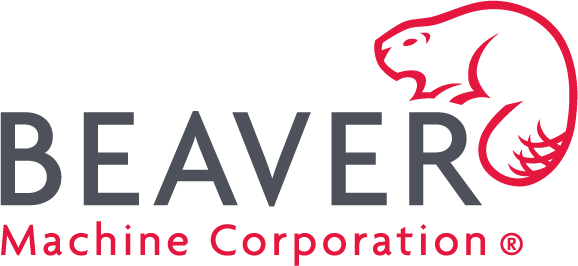Challenges Faced When Implementing Healthy Vending Machines
The increasing prevalence of unhealthy eating habits among consumers has prompted a significant shift towards the introduction of Healthy Vending Machines in various public spaces. According to a report by the Centers for Disease Control and Prevention (CDC), nearly 40% of American adults are classified as obese, with dietary choices playing a crucial role in this alarming statistic. As organizations and vending machine operators recognize the need to promote healthier lifestyles, Healthy Vending Machines have emerged as a viable solution, providing nutritious snack and beverage options that cater to the growing demand for healthier alternatives.
However, the implementation of Healthy Vending Machines is not without its challenges. Research from the National Restaurant Association indicates that while over 70% of consumers express a desire for healthier choices in vending, factors such as consumer resistance to change, higher operational costs, and logistical obstacles can hinder effective deployment. This blog aims to explore these challenges in depth, shedding light on the complexities involved in successfully integrating Healthy Vending Machines into our daily routines.

Identifying the Target Audience for Healthy Vending Machines
When introducing healthy vending machines, identifying the target audience is a crucial first step in ensuring their success. The target demographic typically includes health-conscious individuals, such as fitness enthusiasts, parents seeking nutritious options for their children, and professionals looking for convenient yet wholesome snacks during their busy workday. Understanding the preferences and behaviors of these groups allows operators to curate a selection of products that resonates with their needs, ultimately driving usage and sales. Moreover, locations play a significant role in reaching the intended audience. For instance, placing healthy vending machines in gyms, schools, workplaces, and community centers can effectively attract individuals inclined toward healthier eating habits. These venues not only increase visibility but also reinforce the idea of easy access to nutritious choices. By aligning product offerings with the lifestyle of the audience, vendors can foster a culture of wellbeing within these communities. Another important consideration is the communication strategy. Engaging potential customers through social media, health workshops, or sampling events can help raise awareness of the healthy options available. Additionally, utilizing eye-catching designs and clear labeling in the vending machines can attract attention and educate consumers about the health benefits of the items they offer. By addressing these aspects effectively, operators can better engage their target audience and encourage healthier eating habits through their vending machine offerings.

Navigating Regulatory Challenges for Healthy Snack Options
The implementation of healthy vending machines is a commendable initiative aimed at improving the dietary choices available in public spaces. However, navigating the regulatory challenges associated with offering healthy snack options can be quite complex. According to the National Automatic Merchandising Association (NAMA), vending machine operators must comply with a variety of federal, state, and local regulations that can impact the selection and advertising of products.
One significant challenge lies in ensuring that the healthy snacks meet the guidelines set by the USDA and FDA. These guidelines are often stringent, dictating not just nutritional content but also labeling requirements. For instance, a report from the Centers for Disease Control and Prevention (CDC) highlights that only 37% of vending machine offerings in schools meet the USDA's nutrition standards. Operators must constantly assess their inventory to stay compliant while also appealing to consumer preferences for taste and variety.
Furthermore, local regulations can differ dramatically, requiring operators to invest time and resources into understanding the specific requirements of each jurisdiction. A study published in the Journal of Public Health Policy suggests that areas with strict regulations often see improved public health outcomes, but the burden of compliance can deter businesses from embracing healthy vending options altogether. This disconnect poses a challenge for those looking to implement healthy vending solutions in a landscape marked by bureaucratic red tape.

Overcoming Supplier and Inventory Management Issues
Implementing healthy vending machines in schools and workplaces can significantly promote better eating habits. However, one of the primary challenges faced by organizations is navigating supplier and inventory management issues. According to a report by the International Vending Alliance, nearly 60% of vending operators struggle with sourcing nutritious products that meet customer expectations while aligning with health regulations. This disconnect often results in a limited selection of healthy options, discouraging potential buyers and undermining the initiative's goals.
Supplier relationships play a crucial role in ensuring a consistent and appealing inventory. A survey by the National Automatic Merchandising Association revealed that 42% of operators experience difficulties finding reliable suppliers for healthy snacks and beverages. The sporadic availability of fresh items can lead to stockouts or excessive waste, both of which hinder profitability and consumer trust in the healthy vending machine concept. Adopting a collaborative approach with suppliers, such as joint forecasting and flexible ordering systems, can mitigate these complications and enhance product availability.
Furthermore, effective inventory management is essential for optimizing the performance of healthy vending machines. Research by Statista indicates that over 70% of unsuccessful vending operations cite inventory mismanagement as a key factor in their failure. Implementing robust inventory tracking tools can help operators monitor sales trends and adjust stock levels accordingly, enabling a more responsive approach to consumer demands. By addressing these supplier and inventory management challenges, organizations can ensure the success of healthy vending initiatives and foster healthier lifestyles among their customers.

Educating Consumers on the Benefits of Healthy Choices
In the quest for better health outcomes, the introduction of healthy vending machines is a promising step. However, one of the most significant hurdles these machines face is effectively educating consumers about the benefits of choosing healthier options. Many individuals are often overwhelmed by the abundance of snacks and drinks available, leading to impulsive decisions that favor traditional junk food over nutritious alternatives.
To tackle this challenge, it is crucial to provide clear and accessible information about the nutritional benefits of the items available in healthy vending machines. Engaging graphics, informative labels, and interactive kiosks can help demystify the offerings. For instance, showcasing the high fiber content of a whole-grain snack or the low sugar levels in a natural juice can empower consumers to make informed choices. Moreover, educating consumers about the long-term benefits of healthy eating—such as increased energy levels, improved mood, and better overall health—can shift mindsets and foster a culture of wellness.
Another effective strategy is to incorporate community involvement. Hosting educational workshops or taste-testing events can create a sense of excitement around healthy options. By involving local nutritionists or health advocates, consumers can receive firsthand guidance on making healthier choices and understanding how these choices contribute to their overall well-being. By transforming the shopping experience into an opportunity for learning, we can inspire individuals to prioritize their health while enjoying the convenience of vending machines.
Monitoring Sales and Adapting Offerings to Consumer Preferences
When implementing healthy vending machines, understanding consumer preferences is crucial for success. Monitoring sales data is not just about keeping track of inventory; it provides insights into what customers are truly choosing. For instance, reports suggest that over 60% of consumers are shifting towards healthier snack options, driven by an increased awareness of nutrition and wellness trends. This transition highlights the importance of leveraging analytics to identify popular items and adjust offerings accordingly.
Utilizing big data analytics can significantly enhance decision-making in this context. By analyzing purchasing patterns, operators can pinpoint which snacks are most appealing and fine-tune their selections in real-time. This not only helps in meeting consumer demands but also increases the likelihood of repeat purchases. Recent trends show that personalized marketing, which is enabled by data analytics, can result in a 20% increase in consumer engagement, proving that tailored offerings resonate more powerfully with health-conscious buyers.
Additionally, understanding evolving consumer behavior has become more critical in the wake of the COVID-19 pandemic, as many shoppers are seeking convenient yet healthy options. Reports examine how the customer experience imperative in retail has led to numerous shifts in purchasing habits, placing an emphasis on quality, convenience, and healthfulness of products. Therefore, continuous monitoring and adaptation of vending machine offerings not only address immediate consumer needs but also position operators to capitalize on long-term market trends.

